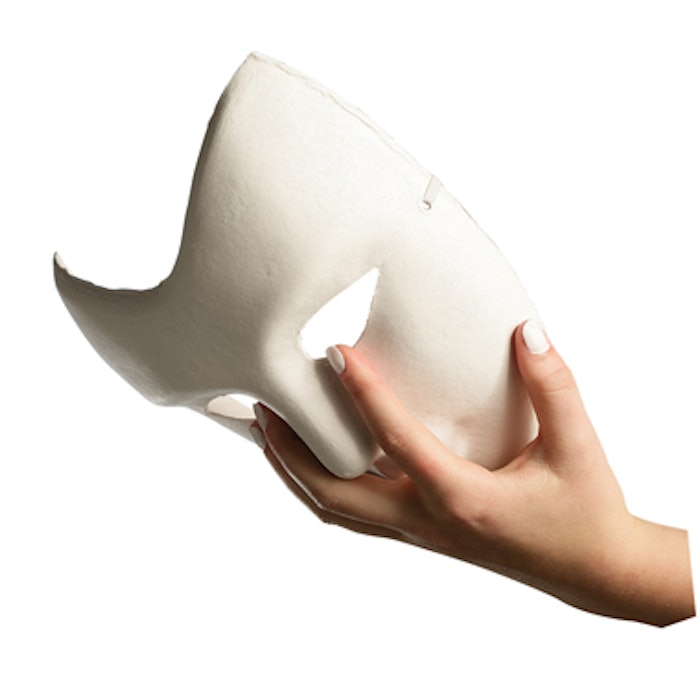
Dermatologists see it regularly—symmetrical patches of excess pigmentation across the nose and/or on the cheeks, chin and forehead. Sometimes called the “mask of pregnancy,” melasma is more common among women but is also seen in men. Causes include a complex amalgam of genetic and hormonal influences that are not yet fully understood, and treatment is challenging.
“Melasma can be categorized according to clinical patterns and histopathology, or depth of pigment in the skin,” says dermatologist Marta I. Rendon, MD, Rendon Center, Boca Raton, Florida.
“The three typical patterns are centrofacial, involving the cheeks, forehead, upper lip, nose and chin; malar, involving the cheeks and nose; and mandibular, involving the lower sides of the face,” says Neelam A. Vashi, MD, assistant professor of dermatology at the Boston University School of Medicine and director of the Boston University Center for Ethnic Skin.
While dermatologists currently employ a wide array of treatments ranging from sunscreens and daily topical lighteners to controlled skin peels and laser or light-based procedures, reliable, consistent, long-term clearance of melasma remains among their most difficult challenges.
Epidermal vs. Dermal
“We refer to melasma as an epidermal or dermal disease; however, the majority of cases involve pigment in all skin layers,” says Dr. Vashi. “Determining the depth of pigment deposits can be very difficult. I often use dermoscopy to look for patterns that can indicate a more superficial, rather than deep, disease.”
Determining the type of melasma and depth of excess melanin deposits is important in providing the most effective treatments and advising a patient on the most likely prognosis. “In the epidermal form, characterized by brown color, melanin is found in the basal and suprabasal layers,” says Mona Sadeghpour, MD, currently pursuing a fellowship with Jeffrey Dover, MD, and his colleagues at Skincare Physicians, Chestnut Hill, Massachusetts. “Historically a Wood’s lamp examination is used to enhance these lesions to aid in distinguishing epidermal from dermal melasma. In dermal melasma, which appears more blue-gray, melanin is found in the superficial and deep perivascular melanosomes, and the pigment does not enhance with Wood’s lamp illumination. The epidermal form is easier to treat and more amenable to topical therapy, while dermal or mixed melasma is more resistant to treatment.”
Strict Photoprotection
First-line treatments involve sun protection and some combination of topical skin lighteners and chemical or mechanical peels. Experts recommend a broad-spectrum sunscreen that protects from both UVA and UVB rays and is water-resistant with an SPF of at least 30. They also recommend sunglasses that block all UV rays as well as blue light. Wide-brimmed hats and other protective clothing are recommended during extended periods in the sun.
“I recommend tinted sunscreens containing iron oxide such as EltaMD UV Daily Broad-Spectrum SPF 40, TiZ03 Facial Mineral Sunscreen SPF 40 Tinted, and L’Oreal Paris Advanced Suncare SPF 50 Plus Liquid Silk BB Sunshield,” says Dr. Vashi. “Iron oxide not only provides a tint but also blocks visible light, which worsens melasma.”
Patients should also minimize UV exposure while in a car. “Patients may not think they spend a lot of time outside, but even incidental UV exposure—through car windows, for example—can worsen melasma. UVA rays in particular contribute to skin darkening through windows,” says Eric F. Bernstein, MD, of the Main Line Center for Laser Surgery in Ardmore, Pennsylvania. “Having photoprotective film professionally applied to car windows to block UVA rays can be a big help.”
Clear window films such as Llumar and Solar Gard block 99% of UVA and don’t hinder night vision. “Car windshields already contain a layer of clear plastic mandated to help prevent broken glass from flying through the air after an impact, but it is not designed to block UVA. I had my windshield treated with custom-designed film, and I’ve been lobbying for years to get car companies to add that layer of plastic to windows as sun protection,” says Dr. Bernstein.
Topical Therapies
In addition to photoprotection, Dr. Sadeghpour recommends topical therapy. “Effective melasma treatment includes removal of the excess melanin in the epidermis and dermis as well as suppression of further melanogenesis. Without these two steps, there is high risk for relapse,” she says. “The gold standard for first-line melasma treatment is strict photoprotection and topical therapy, using either hydroquinone 4% cream, tretinoin or triple combination creams.”
Triple combination creams, such as Tri-Luma (Galderma), which is FDA-approved for treating melasma, include a combination of hydroquinone, tretinoin and a topical steroid.
“Our first-line treatments include phenolic compounds and hydroquinone, as well as azelaic acid and kojic acid in combination with tretinoin, licorice and arbutin,” says Dr. Rendon. “We also have some success with newer topical compounds that incorporate nicotinic acid/niacinamide. Patient satisfaction depends on the severity of the condition, but a high percentage of newly diagnosed epidermal melasma patients get satisfactory results.”
Dr. Bernstein relies on alphahydroxy acids (AHAs) and prescription-strength retinoids to lighten existing pigment. “I do not believe hydroquinone treats the actual cause of the dyspigmentation. In my experience, it has not been successful in most cases,” he says. “Topical daily-use products, such a retin A and its cousins adapalene and tazarotene, work better than over-the-counter products when it comes to improving melasma. We also offer glycolic acid peels and, in some cases, low-level laser treatments using the Clear + Brilliant Permea handpiece (Valeant Pharmaceuticals) to help drive beneficial topical products into the skin.”
Pregnant patients should first consult their obstetricians regarding which products they can safely use. “Most use AHAs versus retinoids during pregnancy and chemical-free, non-nanoparticle physical sun blockers,” says Dr. Bernstein.
Recalcitrant Melasma
For many patients, first-line treatments are not satisfactory, but experts don’t always agree as to the best, most effective option for persistent cases.
“For persistent melasma, we continue first-line treatments and add physical therapies, such as peels and microdermabrasion. More recently, [we’ve been offering] microneedling, which does not cause chemical injury to the epidermis, thereby increasing clearance rates and reducing the risk of hyperpigmentation,” says Dr. Rendon. “When all other modalities have failed, we sometimes suggest intense pulsed light (IPL) or laser treatments, depending on the chronicity of the condition, previous treatments and skin type.”
Dr. Vashi also avoids rushing to use lasers. “Laser treatments can cause unsightly side effects, such as light spots, dark spots and/or scarring, and can even worsen melasma,” she explains. “I typically offer chemical peels and/or microneedling to those with recalcitrant melasma. In addition, I treat selected patients with oral pills such as tranexamic acid after I take a thorough medical history. Oral pills are not for everyone. They should not be given to certain patients, including those with clotting problems, and can cause side effects.”
Dr. Sadeghpour, however, does prescribe laser or light treatments for patients who are not responding to topical therapy. “We often recommend adding laser treatments with our Q-switched Nd:YAG laser using low fluencies (first line) or our IPL device,” she says. “Current evidence from randomized studies suggests that low-fluence QS Nd:YAG and IPL provide the most effective results.”
IPL shows better results in primarily epidermal melasma and with Fitzpatrick skin types 1 to 3, while the QS Nd:YAG has broader efficacy in treating both dermal and epidermal melasma, Dr. Sadeghpour adds. In 2012 the Lutronic Spectra, a dual-pulsed Nd:YAG laser, was the first aesthetic device to receive FDA clearance for the treatment of melasma.
“Currently, QS Nd:YAG is the most commonly used laser treatment for melasma in Asia,” says Dr. Sadeghpour. “When these devices are combined with effective photoprotection and topical lightening creams, the improvement in melasma is significantly better, and risk of relapse lower than when using any of the devices or topical therapies as monotherapy. After laser therapy, it is important to counsel patients to continue using photoprotection and a topical lightening agent to reduce recurrence risk.”
Nonablative fractional lasers (NAFL) might offer a longer-lasting response than even IPL or Q-switched lasers, according to a recent literature review of laser and light devices used to treat melasma (Trivedi et al, March 2017 International Journal of Women’s Dermatology). Recurrence in patients treated with IPL or Q-switched lasers tended to begin sooner than three months after treatment, while recurrence after treatment with NAFL did not appear until sometime between three and six months, the study showed. NAFL devices can also be used with a wider range of skin types and are better at blending skin tones in the treated area with those in surrounding unaffected skin, the authors noted. The Fraxel laser (Solta Medical) received FDA clearance to treat melasma in 2005. But whichever light or laser source is employed, results require multiple treatments, and hyperpigmentation is likely to recur.
Pico Potential
New laser technologies, now being researched, may provide better outcomes with a lower risk of post-inflammatory hyperpigmentation (PIH). “Newer lasers, including those that use picosecond pulses and low-density fractionated technologies, appear the safest and most promising,” says Dr. Vashi.
Dr. Bernstein is currently enrolling patients for a study using the Picoway Resolve fractionated holographic handpiece (Syneron-Candela) to treat melasma. “Our practice has seen several patients who received Picoway treatments for wrinkles whose melasma was greatly diminished as well. This study will directly assess the usefulness of this device for improving melasma pigmentation,” he says.
PicoWay is a dual-wavelength (532nm/1,064nm) picosecond laser. The Resolve handpiece delivers an array of 101 microbeams in each pulse. It is one of several devices using the relatively new picosecond technology, and there are more in the pipeline.
“Picosecond lasers have introduced a novel method for pigment fragmentation by delivering energy at a speed that is three orders of magnitude faster than the nanosecond speed of Q-switched lasers. It is thought that this faster delivery mode can result in a ‘cleaner’ mode of melanosome fragmentation and clearance by causing injury that is more acoustically driven and has less damaging photothermal effects,” says Dr. Sadeghpour.
A recent randomized, split-face study of 39 Korean patients by Choi, et al (Lasers in Surgery and Medicine, September 2017) utilizing a picosecond dual-wavelength 595nm and 1,064nm laser in combination with 2% hydroquinone versus hydroquinone 2% alone showed superior improvement in relative lightness value at trial completion and followup on the laser-treated side.
“But, as with other laser treatments, patients indicated a likelihood of melasma recurrence during the followup period,” Dr. Sadeghpour says. “So, while picosecond lasers have potential to improve melasma treatment out-comes, much will need to be deciphered about their efficacy and safety.”
Linda W. Lewis is the contributing editor of MedEsthetics.
Image copyright Getty Images











